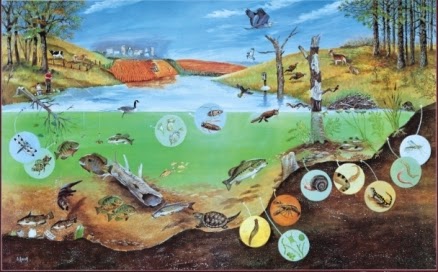INNOVATIVE LESSON TEMPLATE
Name of the Teacher : Anija.P
Name of the school : Govt. V.H.S.S, Mancha Std : IX
Subject : Biology Str : 42
Unit : The chemical changes of food Period :2nd
Topic : Human Digestion Time :45 min
Avg age :14+
Subject : Biology Str : 42
Unit : The chemical changes of food Period :2nd
Topic : Human Digestion Time :45 min
Avg age :14+
Curricular Statement
The
Pupil develops different dimensions of knowledge about the digestive parts of
human through group discussion, lecturing using charts, flow charts, participation in group work, reporting presentation etc and evaluation by
questioning, observation of flow chart, participation in group work, reporting
presentation etc.
CONTENT ANALYSIS
TERMS
Digestion, mechanical digestion, chemical digestion, Enzymes.
FACTS
1. The food we eat passes through
alimentary canal
2. Mouth, oesophagus, stomach and pancreas
are the parts of alimentary canal.
3.
Liver, large intestine, small intestine,
rectum and anus are also the parts of alimentary canal.
4.
Food from the mouth passes through
oesophagus to the stomach.
5.
From stomach the food goes to small
intestine and then to large intestine.
6.
The waste particles of food materials
are stored in rectum.
7.
The waste particles are eliminated
through anus.
8.
The food breaks down into simple units
at different parts of alimentary canal.
9.
Digestion is the process of breaking
down of food particles into simple units at mouth and stomach.
10. Chewing of food is known as mechanical
digestion.
11. Digestion is of two types. They are
chemical digestion and mechanical digestion. 12. Digestion in stomach is also mechanical
in nature.
13. Through mechanical digestion the stomach
breaks down the food particles.
14. These combined with digestive juices to
form a paste
15. Through this food can react with enzymes
in digestive juices and can take part in chemical processes
16. Digestive
juices use enzymes to convert them into absorb able simple units.
17. This
type of absorption is known as chemical digestion.
CONCEPT
MAJOR CONCEPT
Digestion in human.
MINOR CONCEPT
1. Different parts of
human alimentary canal include mouth, oesophagus, stomach, liver, duodenum,
small intestine, large intestine, rectum and anus.
2. Food travels through
alimentary canal and breaks down into parts simple units while passing through
different parts of the human body takes places the process called digestion.
3. Food is transformed
into a paste form at stomach then the enzymes in digestive juices is mixed with
it and helps to absorb nutrients from it.
PROCESS
Digestion is the
process by which the food we eat passes through the alimentary canal and breaks
down into simple units at different parts of the alimentary canal.
LEARNING OUTCOMES
To enable the pupil,
-recalling the term
digestive tract,
recognising the various
parts of digestive tract,
explaining the parts of
human body,
For developing factual
knowledge
-recalling the term
digestive tract,
recognising the term
digestion,
explaining the term
digestion,
classifying the
functions of parts of digestive tract,
realling the function
of stomach.
For developing
conceptual knowledge,
-executing the group
work to identify the functions of digestive organs,
differentiating the
functions of small intestine and large intestine.
For developing
procedural knowledge,
-develop process skill
such as observing the digestive tract, classifying the functions of digestive
organs, communicating with others about the digestion, inferring about the importance of digestion.
-develop positive
attitude towards the digestion.
PRE-REQUISITES
Digestion process in
human body takes place by the passage of food particles through alimentary
canal.
TEACHING-LEARNING RESOURCES
Video- working of digestive system, Chart- Digestion, Images- Liver,Stomach, Small and Large intestine.
Classroom interaction procedure |
Expected pupil response |
||
INTRODUCTION
Teacher involves in a friendly talk with students. Then ask students questions to check their previous knowledge.
Which type of food have to be selected for eating? Do you remember about the nutrients and their functions? Why should we eat nutritious food? Do you know how these nutrients reaches in our body? Let us see what are the changes happens to the food we eat. PRESENTATIONACTIVITY 1
First of all, Divide the students into four groups as Mouth, Oesophagus,Stomach and Pancreas. After that, teacher shows a video and ask the students to observe it carefully.
DISCUSSION HINTS What did you saw on the video?What are the parts of alimentary canal?ACTIVITY 2Teacher shows a seminar report done by aswathy about digestion.SEMINAR REPORT
DISCUSSION HINTSWhat is digestion?How man types of digestion? Give an example for mechanical digestion? What would happen if mechanical digestion is not properly working? ACTIVITY 3Teacher shows the pictures of some organs in human body, drawn in fabric paint.DISCUSSION HINTSIdentify the organs and write the names of those organs which take part in digestion process?What are the functions of stomach? SUMMARISATIONThrough discussion and observation students will learn about digestion.Alimentary canal (CB)Mouth (CB)Oesophagus (CB)Stoamch (CB)Small intestine (CB)Large intestine (CB)Rectum (CB)Anus (CB)Digestion (CB)Mechanical Digestion (CB)Chemical Digestion (CB)Enzymes (CB) | Nutritious food Yes For the production of energy and regulation of life activities. No Working of Digestion System. Mouth, oesophagus, stomach, small intestine, large intestine, rectum and anus. It is the process of food which passes through alimentary canal breaks down into simple units at different parts of the alimentary canal. Two. Mechanical and chemical digestion. Chewing of food in mouth and churning in the stomach. The nutrients wont be absorbed into the body. Liver and Stomach. Churning of food. |

FORMATIVE EVALUATION PROCEURE
REVIEW
Complete the Flow Chart
|
|||















.jpeg)










.jpg)



